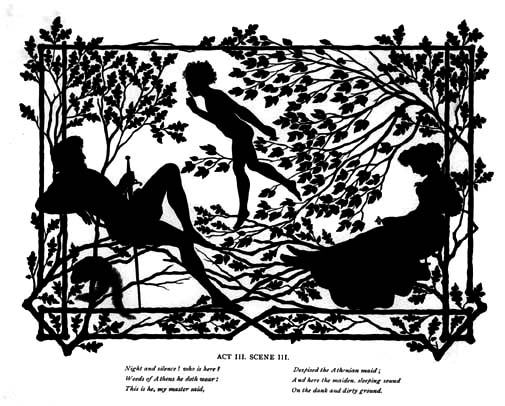Greifswald, 5 April 1841 • Berlin, 13 Mai 1871
The son of an employee of the University of Greifswald, from childhood he loved to cut human and animal figures from paper. After school he studied sculpture and painting in the studios of Friedrich Drake and Adolph Menzel in Berlin, among others, but continued to work with the art of silhouettes. His friendship with Herrmann Karl Fröhlich, a trimmer twenty years his senior, was important to his artistic development. His first album with 6 silhouettes, which he released in 1862, was unsuccessful; gained his artistic recognition with his work on Goethe’s Faust of 1865 (“Zwölf Blatter zu Goethes Faust“, a composition for lampshade), the single sheet with the title “Easter Walk” preceded him in 1864. For both works he made lithographs after the paper cuts. Later he used woodcuts instead.
In 1867 he moved to Stuttgart, where he created his most important works: illustrations for Shakespeare’s A Midsummer Night’s Dream (Heidelberg 1868) and for Falstaff (Lahr 1870).
His latest work was the children’s book: “Der Schwarzen Peter“. The verses came from his brother-in-law Johannes Trojan, who published a large number of single sheets in illustrated newspapers and popular, children’s and youth books on the estate and thus further contributed to Konewka’s fame.
Konewka’s works were appreciated because “they were distinguished by rich imagination, bright humor and a beautiful sense of form”. In retrospect, Konewka is considered “the foremost German silhouette artist of the 19th century. In a sense, the amateurish character of the art practice of silhouettes and paper cutting in Germany was transformed by him into a lovable mastery”.
source: wikipedia











